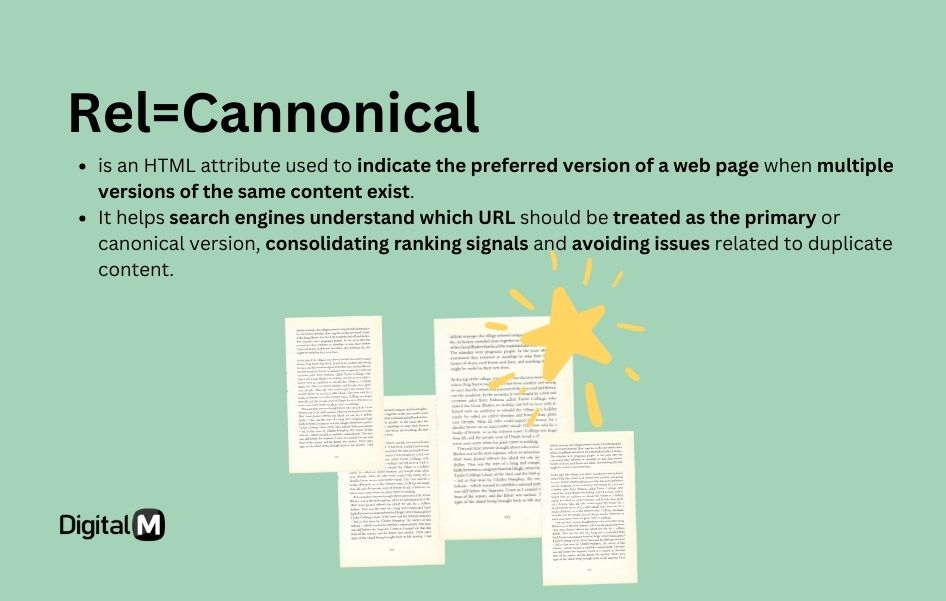Rel=canonical
The “rel=canonical” is an HTML attribute used to indicate the preferred version of a web page when multiple versions of the same content exist. It helps search engines understand which URL should be treated as the primary or canonical version, consolidating ranking signals and avoiding issues related to duplicate content.

Think of rel=”canonical” as a tag that tells search engines which version of a page is the main or most important one. It helps avoid confusion when there are multiple versions of similar content.
Key Points:
Canonicalization: Refers to the process of selecting the preferred URL when duplicate or similar content exists on different URLs.
Consolidating Signals: rel=”canonical” consolidates ranking signals, preventing search engines from treating similar pages as separate entities.
How rel=”canonical” Works:
Placement: The rel=”canonical” tag is placed in the HTML head section of a webpage.
Indication: It points to the canonical URL, indicating which version of the page is considered the primary one.
Common Use Cases:
www vs. non-www: When a website has both www and non-www versions, rel=”canonical” can be used to specify the preferred version.
HTTP vs. HTTPS: Similar to www vs. non-www, rel=”canonical” helps specify the preferred protocol (HTTP or HTTPS).
SEO Benefits:
Helps prevent duplicate content issues, which can dilute the ranking signals and impact search engine performance.
Example:
If a webpage has both “http://example.com/page” and “http://www.example.com/page” versions, adding rel=”canonical” to one version (preferably the one considered the primary) informs search engines that this is the preferred URL.
Why it Matters:
Search Engine Consistency: rel=”canonical” ensures that search engines consistently understand which version of a page to index and rank.
Duplicate Content Prevention: Helps prevent issues arising from similar or duplicate content across multiple URLs.
Improved SEO: By consolidating ranking signals, rel=”canonical” contributes to better SEO performance and visibility.
Suggested Read: The SEO Consequences of Duplicate Content: How It Can Impact Your Website
In summary, rel=”canonical” is an HTML attribute used to indicate the preferred version of a web page when there are multiple versions of similar content. It plays a crucial role in avoiding duplicate content issues, ensuring search engines understand which version to index and rank.

